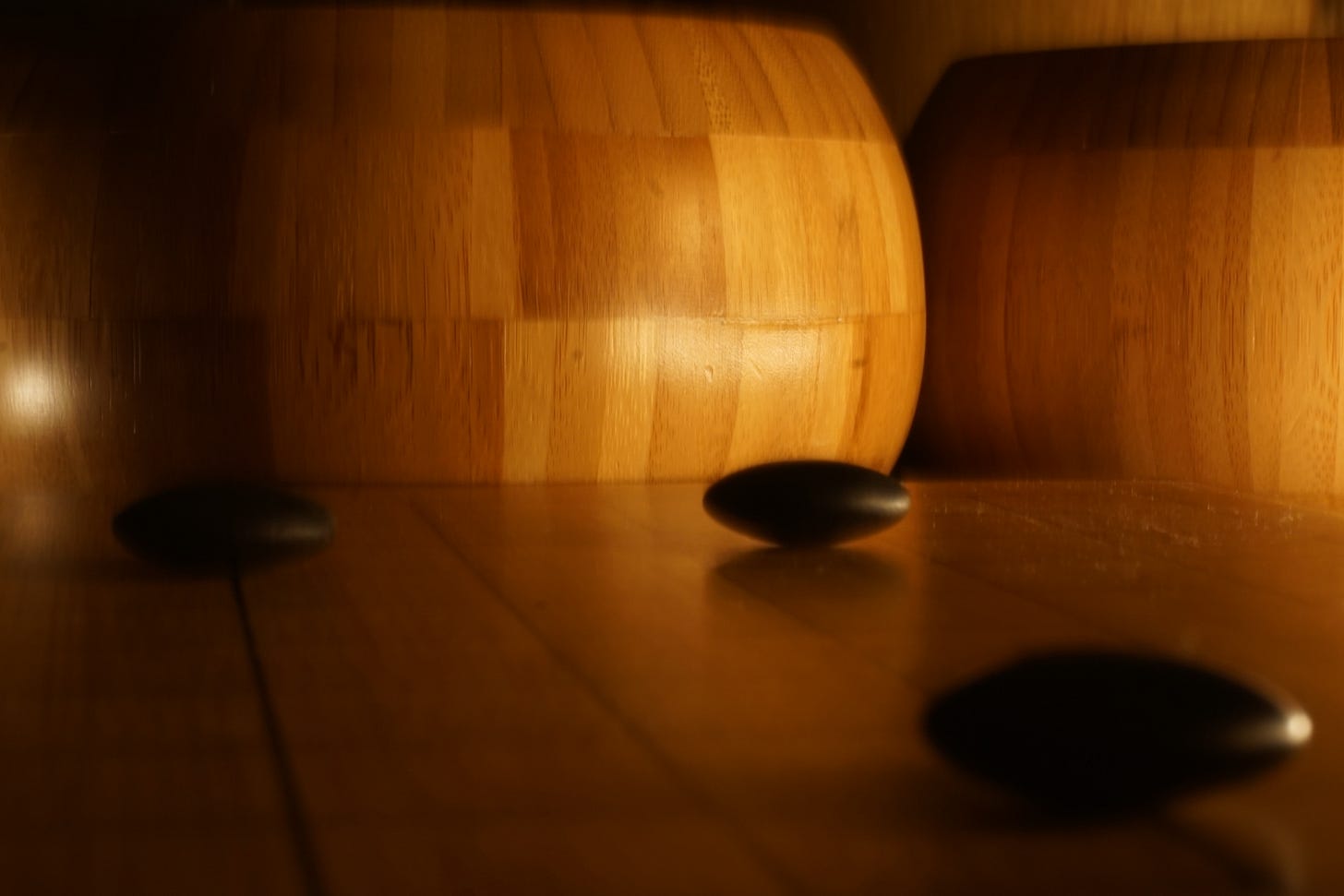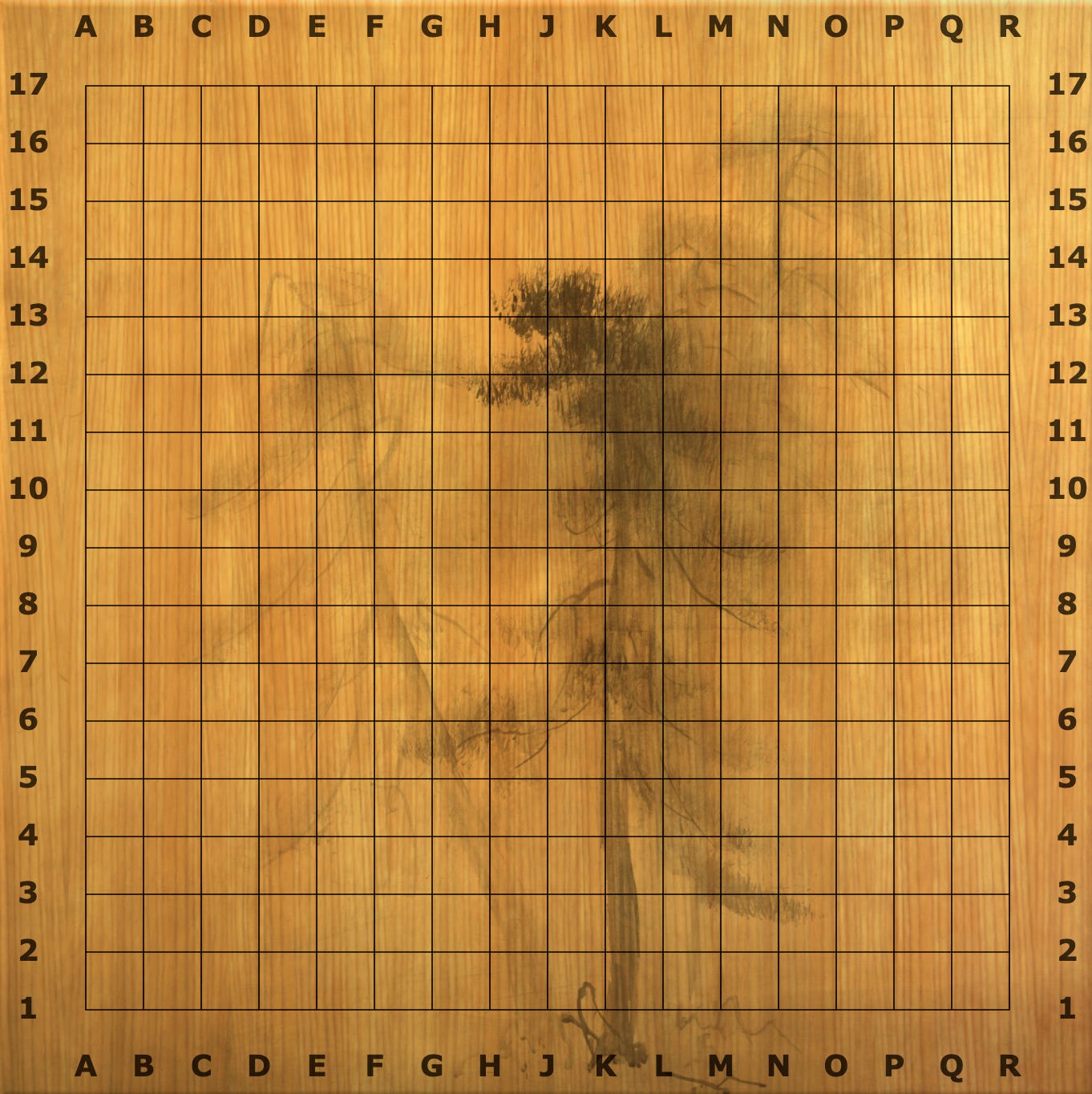17x17 Go and other alternate sizes
21x21, 15x15, 7x7... What is your favorite board size outside of the 'big three'?
Did you know that the oldest Go board archaeologists have found was not a 19x19, but a 17x17 grid?1 It is attributed to the Han Dynasty around 200 AD and researchers hypothesized that it belonged to temple guards, meaning that Go (weiqi) was known by the common people in addition to nobles.
Tibetan Go is also played on a 17x17 board2, although it has additional variations from classic Go like stone formations to start the game and a slightly different ko rule.3 (Maybe I’ll dive into these rulesets in a future edition—from my quick research for this post it looks fascinating).
When I heard this, I wanted to try out the 17x17 grid immediately. I like 13x13 games and was drawn to the idea of playing the same board that was played over 2000 years ago. It is a strange feeling — the board is at once quite unfamiliar and also not so different than normal. It only adds to the potency of this feeling when I remember that humanity has been playing this same game for many, many generations.
Go is interesting in the way that the rules don’t change at all on different board sizes, but it becomes an entirely different type of game as the number of added or subtracted intersections is greater. The 10 fewer lines in a 9x9 game make it a game entirely about fighting and cutting as opposed to the 19x19 board where influential play is a viable (and necessary) strategy. These two sizes feel completely different—because they are.
That is why the 15x15 and 17x17 boards are so intriguing to me. The size difference is enough to be noticeable and unique, but not enough to completely change your outlook at the opening. Standard opening patterns look reasonable, as well as standard approaches. The groups simply… come together more quickly. The opening is over almost before you realize, and the middlegame is shorter. The sides of the board exert more power over one another. Vigilance and focus are required to avoid disaster.
Since I am no advanced player, this increased pace sometimes benefits me and sometimes is an unpleasant surprise. I have not played often or taken it seriously enough to really get a handle on the tactical nuance that the different playing field demands.
I’ve also played 15x15 Go, which is similar. I have friends in the OGS chatrooms who play correspondence 21x21 games. I have yet to try any size larger than 19x19 or smaller than 9x9. Small boards appeal to me less than larger boards, as I don’t even care too much for 9x9. It feels cramped and my opinion is that a lot of dimensionality is lost with such a small size.
I know there are even options on OGS for non-symmetrical sizes such as 19x9 or 5x13 although I have not yet ventured into these strange lands. If and when I do, I will record my thoughts for you here. I imagine these would be each unique experiences and come with their own tricks and strategies. Thinking of 5x13, the first thing i think of is that the 3-3 on either side of the board is probably a very strong position.
Have you experimented with any of these sizes? What was your experience? What about any that I neglected to mention?
Hop into the comments or reply to this email to let me know! I’m curious.
The Western Server Challenge starts tomorrow! Maybe we will run into each other on OGS.
Go play Go!
“Go in Ancient China”, John Fairbairn 1995. Retrieved February 21, 2025
“The Game of Go in Ancient and Modern Tibet”, Peter Shotwell 1993. Retrieved February 21, 2025
“Tibetan Go”, Sensei’s Library page, 2017. Retrieved February 21, 2025



